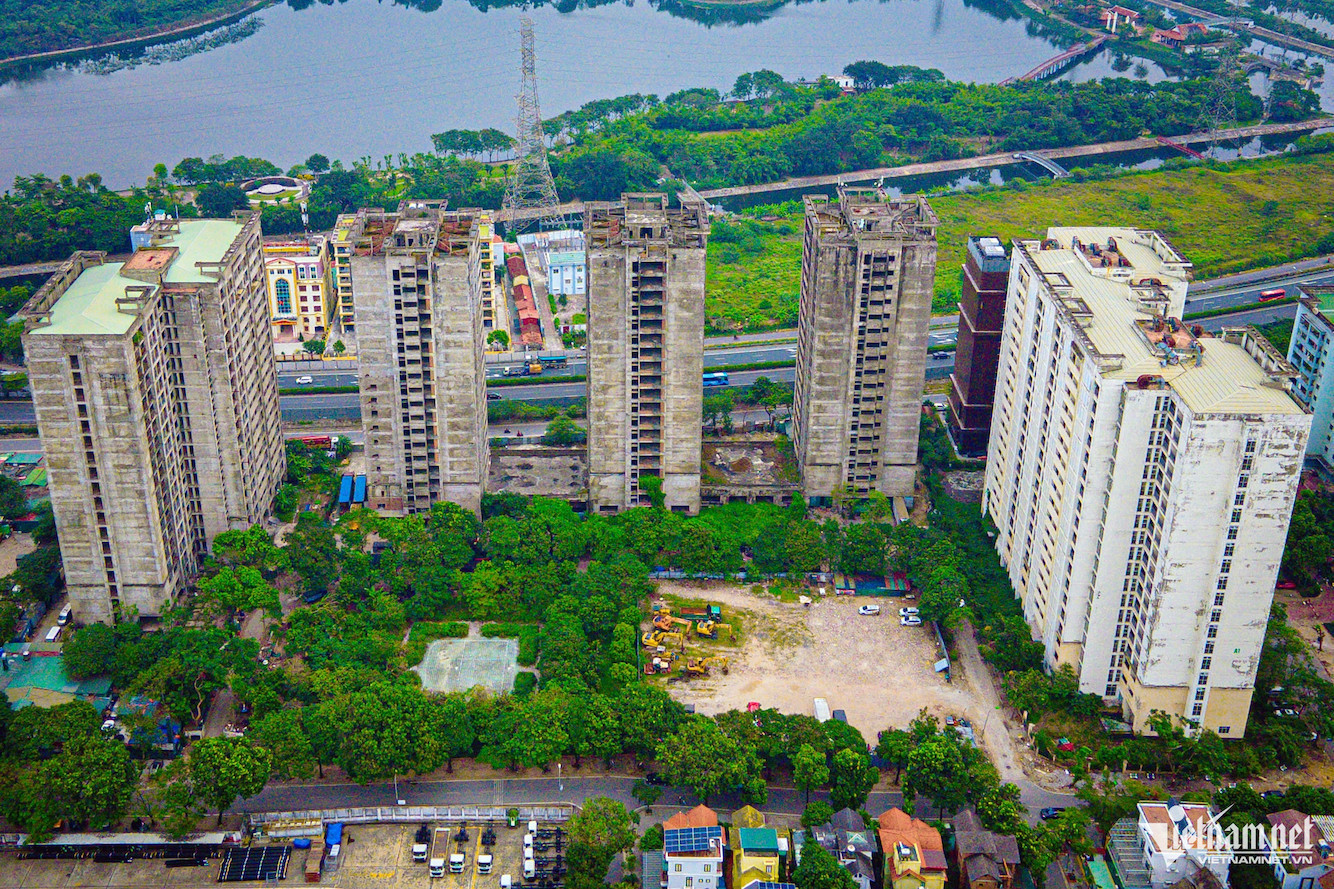
State agencies and analysts warned there is a serious demand-supply imbalance in the real estate market. Housing prices keep rising, affecting people’s housing access.
On November 13, Minister of Natural Resources and the Environment Do Duc Duy, authorized by the Prime Minister, made a presentation about the National Assembly's draft resolution on using land of different types (agricultural land, non-agricultural land, and land of other types on the same land plots) for commercial residential housing development on a trial basis. The pilot program will be implemented over five years.
The sharp rise in real estate prices relative to people’s income in 2022-2023 was mentioned in the National Assembly's Supervisory Delegation’s report on the results of the implementation of laws and policies on real estate management and social housing development in 2015-2023.
The report pointed out that affordable apartmemts for the majority of people no longer exist in Hanoi and HCM City.
The Ministry of Construction’s (MOC) Q3 real estate market bulletin also mentioned the absence of affordable housing products priced below VND25 million per sqm. There was nearly no transaction reported and no product for sale.
About 10 years ago, with VND1 billion, buyers had many choices at projects in Ha Dong, Hoai Duc and Hoang Mai districts in Hanoi, such as Kim Van Kim Lu project, and Linh Dam residential quarter, which offered 60 sq m apartments with two bedrooms.
From 2014 to 2019, there was a rapid increase in the supply of new housing products in Hanoi and HCM City, according to CBRE.
However, in the last four years, apartments fitting the majority of people’s pockets, priced at VND1-3 billion, have gradually disappeared.
Le Hoang Chau, chair of the HCM City Real Estate Association, said there has been no affordable (priced at below VND3 billion) product available in the city since 2021.
Regarding social housing, there are about 12,000 apartments available.
“The real estate market is in a state of an upside down pyramid, which leads to instable and unsustainable development,” Chau commented.
In Hanoi, no one has found low-cost residential housing since 2020. According to the Hanoi People’s Committee, the housing market has been dominated by mid- and high-end apartments.
Apartment prices soared in 2022 and the number of successful transactions was low, just accounting for 10 percent of total products marketed. The prices of separate houses stayed high and there were nearly no transactions in the market segment.
According to the Vietnam Association of Realtors (VARs), products in the housing market have become less diverse. In the first nine months of the year, high-end products (over VND50 million per sq m) and luxury products (over VND80 million) dominated the market, accounting for 70 percent of total supply.
Savills Vietnam said, as of the end of the third quarter, apartment primary prices in Hanoi are hovering around VND69 million per sq m, up 6 percent over the previous quarter and 28 percent over the same period last year.
Savills said though the market has been growing, the gap between household incomes and housing prices has widened. While average income has increased by only 6 percent per annum, housing prices in the secondary market have risen by 17-20 percent.
Minh Thuy, an office worker from Cau Giay district in Hanoi, who has been looking to purchase an apartment, complained that no new apartment priced below VND50 million per sq m was available in Hanoi.
“With VND3 billion, you can only buy a new apartment with 1 bedroom + 1, or a studio apartment (apartment with single room) in projects in the west and east parts of the city, or old apartments in some suburban districts."
At a newly launched project in DongAnh district, an investor announced prices for studio apartments (30.5-31 sqm) at VND3.26-3.68 billion. This means that VND3 billion won’t be enough to own a studio apartment there. Thuy has canceled her plan to buy an apartment.
According to the Ministry of Natural Resources and the Environment (MONRE), the real estate prices have increased because of short supply which is attributed to the difficulties in land access to implement commercial housing projects.
Hong Khanh